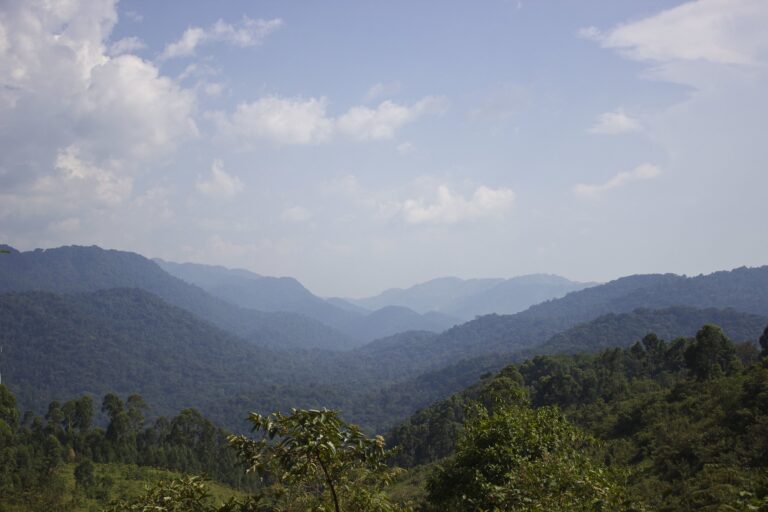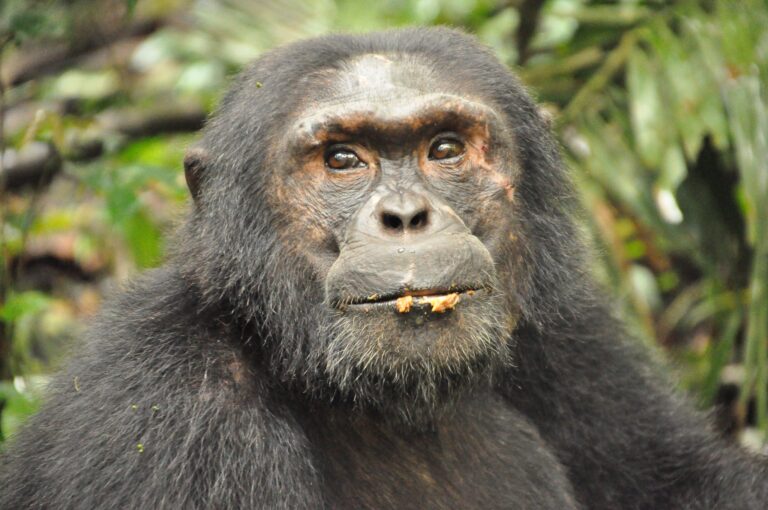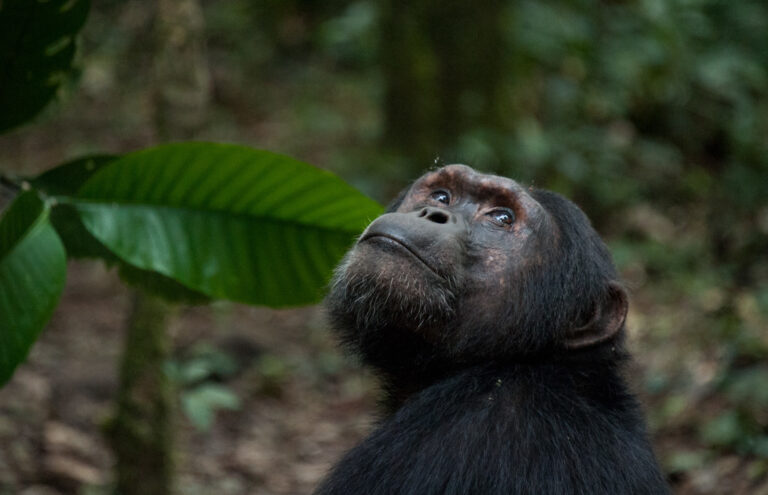
Gorilla trekking in Rwanda and Uganda offers a once-in-a-lifetime opportunity to encounter endangered mountain gorillas in their natural habitat. However, the experience comes at a steep price, with permits alone costing $800 in Uganda and $1500 in Rwanda.
Why is Gorilla Trekking So Expensive?
Several factors contribute to the high costs associated with gorilla trekking:
Sample Safari Packages
Book Your Safari With One of These Top Rated Safari Companies
Small population size – There are only about 1000 mountain gorillas left in the wild, making them an extremely rare species to see. Their endangered status increases demand among wildlife enthusiasts.
Constant monitoring – Gorilla groups require daily tracking and healthcare checks by rangers to ensure their protection. This is an expensive endeavor.
Limiting human impact – Only 8 visitors can see a gorilla group each day for 1 hour. This limits potential revenue but protects the gorillas.
Tourism revenue for conservation – Gorilla permit fees provide critical funds for gorilla conservation and national park operations. Up to 75% of permit fees go towards protection efforts.

Gorilla Permit Costs: The Lion's Share of Expenses
Uganda Gorilla Permit Costs
Foreign non-resident: $700 per trek
Foreign resident: $600 per trek
East African Citizens: UGX 250,000 per trek
Rwanda Gorilla Permit Costs
Gorilla Habituation Experience
This special permit allows 4 hours with a gorilla group.
Costs $1500 per person in Uganda.
Permit prices can change, but always comprise the biggest expense of a gorilla safari. Without the permit, trekking is prohibited.
The high fee provides necessary funds for gorilla conservation efforts. Most tourists agree it is well worth the price for a once-in-a-lifetime experience.
Securing a permit early through a reputable tour operator is essential for your chosen travel dates. Demand is high, so plan 6-12 months in advance if possible.

Accommodation Costs for Gorilla Treks
Once permits are booked, the next considerable expense is accommodation near the national parks. You’ll need a place to stay before and after trekking. Here are average lodging costs per person/per night:
Uganda Lodging
Budget Lodges: $50 – $100
Mid-range Lodges: $100 – $350
Luxury Lodges: $350 – $1500+
Rwanda Lodging
Budget Lodges: $100 – $300
Mid-range Lodges: $300 – $800
Luxury Lodges: $800 – $1500+
Lodges usually include full board meals. The more expensive options offer lavish amenities like private cottages, views, and exceptional service.
Most travelers opt for mid-range accommodation around $250/night for a comfortable experience. Luxury lodges in Rwanda can run over $1500/night.
Research your lodge carefully and inquire what amenities are included. Also consider low vs. high season rates in your budget.
Transportation Costs - Getting To and From the Parks
Since gorilla parks are located deep in remote forests, getting there requires planning. Transportation costs for gorilla treks include:
Flying vs Driving
Flights from Entebbe to parks – $300-$600 roundtrip
Car hire for airport transfer – $100-$250/day
Driver guide – $20-$50/day
Fuel costs
Driving is cheaper but takes 8-10 hours from Entebbe. Flights are 1 hour but expensive.
Ground Transport Estimates
Small 4×4 Car Hire – $60-$100/day
Safari Landcruiser Hire – $150-$300/day
Driver Guides – $20-$50/day
Fuel costs on top
Add about $20/person for porter fees to help with bags. Most find porters essential.
For personalized help arranging flights, transfers and transport, use a trusted tour operator. They can handle logistics while you focus on the trek!
Additional Costs to Factor Into Your Gorilla Trek Budget
Aside from permits, lodging and transport, other miscellaneous costs contribute to your overall gorilla trekking budget:
Park fees – $50-100 per entry
Guide fees – $20-50 per trek
Meals – $30-60 per day
Visas – $50-100 per entry
Vaccinations – Yellow fever – $150
Gear – Hiking boots, backpack, walking stick, moisture-wicking clothes, gloves – $200-500
Porters – $15-20 per trek
Tips – $20-50 per day recommended
Souvenirs – $20+ per item
Unexpected costs – $100-200 buffer
Having a budget surplus is wise for incidentals. And don’t forget travel insurance!
Work with your tour operator to optimize costs and understand exactly what is covered in your tour price. This helps avoid surprise expenses.
While a splurge, gorilla treks create life-long memories. Proper planning ensures you stay within budge
Budget Saving Tips for Gorilla Treks
Gorilla trekking can strain the budget, but these tips help lower costs:
Visit in off-peak seasons
Peak season is June-August and December-February when permits are limited. Visit during off-peak months like March-May and September-November for lower rates on permits, flights and lodging.
Book budget-friendly lodges
Opt for budget or mid-range lodges vs luxury options. Also check for low season discounts on lodging.
Share transport costs
If traveling as a group or family, share one vehicle to cut down on transport expenses.
Fly into Kigali for Uganda treks
For Uganda treks, flying into Kigali instead of Entebbe saves time. Just factor in the border crossing fee.
Use public transportation
Buses and shared minivans are cheaper but less convenient than a private car. They also run on local schedules.
Book a longer safari
Booking a longer itinerary that includes multiple activities and parks helps distribute costs over more days.
Buy permits and tours locally
Local operators can offer lower prices than international companies. But do vet quality.
Use a tour operator
Experienced tour operators know how to keep costs reasonable without sacrificing service.
Get creative when budgeting! With some flexibility, gorilla treks can fit into most travelers’ budgets.
What's the Total Price Range for a Gorilla Trekking Tour?
Putting together all these elements – permits, transport, lodging, etc – what is the total price range for a gorilla trekking tour in Uganda or Rwanda?
3 Day Gorilla Trek in Uganda
Budget: $1300 per person
Mid-range: $2200 per person
Luxury: $3900+ per person
3 Day Gorilla Trek in Rwanda
Mid-range: $3000 per person
Luxury: $5000+ per person
7+ Day Gorilla Safari
Adds other activities like game drives. Distributes costs over more days.
Budget: $2200 – $3200 per person
Mid-range: $3200 – $4200 per person
Luxury: $5000+ per person
Prices vary between operators. Groups enjoy lower rates per person. Solo rates are higher.
While not cheap, a gorilla safari is an investment in a life-changing adventure. Price should not deter you from going if it has been a dream. Splurge if you can, or get creative if on a budget.

Uganda vs Rwanda: Where is the Best Place for Gorilla Trekking in Africa?
For travelers seeking a once-in-a-lifetime mountain gorilla encounter, Uganda and Rwanda offer the most accessible trekking opportunities in Africa. But deciding where to go between these two iconic destinations can be tough. Here’s a full comparison of key factors to help determine if Uganda or Rwanda is the best fit for your gorilla trekking adventure.
Accessibility of Permits
Uganda has a higher density of habituated gorilla families concentrated heavily in Bwindi Impenetrable National Park, allowing the country to offer nearly double the number of permits per day compared to Rwanda.
This greater availability makes securing a permit much easier in Uganda, often several months out versus Rwanda where last minute bookings are rare due to quicker sell outs. Uganda also provides discounted permit rates for East African residents and foreign residents, whereas Rwanda charges all tourists the same $1500 rate.
Overall, Uganda wins for permit accessibility especially if booking on a budget or shorter timeframe.
Pricing Differences
A permit in Uganda costs $700 versus $1500 in Rwanda – less than half the price. When including transport, lodging, food and other expenses, a 3 day gorilla trek costs approximately $1300 in Uganda or $3000 in Rwanda on average.
For budget conscious travelers or those seeking the most affordable option, Uganda is the clear choice. But for luxury travelers who place less emphasis on cost, Rwanda provides a more upscale experience.
Chance of Viewing Gorillas
With more family groups to choose from, Uganda offers a 95% or higher chance of locating and viewing gorillas after the strenuous trek. Rwanda’s smaller concentration of groups leads to a slightly lower 85-90% success rate.
Serious gorilla enthusiasts aiming to maximize viewing opportunities tend to favor Uganda in this regard, while more casual travelers find both countries deliver excellent sighting odds.
Ease of Trekking
The strenuous treks in Uganda’s Bwindi Impenetrable National Park range from moderately difficult to extremely tough, averaging 5-6 hours to reach the gorillas. Rwanda’s Volcanoes National Park sees uniformly steeper, longer treks averaging 6-8 hours.
Travelers lacking strong physical fitness may find Uganda’s options for more accessible treks preferable, while the young and adventurous embrace Rwanda’s intense challenge.
Quality of Habituation
Uganda’s gorilla groups are conditioned to tolerate human presence but remain mostly wild, often opting to forage on vegetation versus interacting with visitors. Rwanda’s gorillas are extremely habituated and unfazed by tourists who can approach very close.
If viewing natural gorilla behaviors is a priority, Uganda offers a more authentic mountain gorilla experience over Rwanda’s potentially overly domesticated troops.
Traveler Comfort and Infrastructure
Rwanda boasts smoother roads and top notch tourism infrastructure around Volcanoes National Park while Uganda’s Bwindi region has rougher access requiring hardy 4×4 transport into the park.
Travelers seeking luxury, seamless logistics and maximum comfort favor Rwanda while budget focused tourists willing to trade comfort for affordability opt for Uganda’s simpler visitor infrastructure.
Political Stability and Security
Rwanda is universally hailed as exceptionally safe, stable and devoid of corruption – it’s Africa’s stand out destination for low risks. Meanwhile Uganda has stabilized into a steadily more secure tourist destination but some lingering trepidation remain.
Those with security concerns lean towards Rwanda for utmost peace of mind while Uganda satisfies budget travelers’ standards and needs.
Conclusion – Set Priorities to Pick the Best Fit
Weighing all factors, Uganda rates higher for cost conscious travelers and gorilla fanatics given its pricing edge and abundance of viewing opportunities. Rwanda appeals more to luxury travelers seeking premium lodging and seamless logistics.
Evaluate your budget, goals and style to decide if Uganda or Rwanda is the best place to achieve your dream mountain gorilla adventure. Either promises a profound wildlife encounter!
Suggested Uganda Safari Packages 2025
Summary - Gorilla Trekking is Expensive But Worthwhile
In summary, gorilla trekking is one of the more costly African wildlife experiences due to:
Scarcity of gorillas driving high demand
Need to fund ongoing conservation efforts
Limits on visitors to protect the gorillas
Permits cost $700-$1500 per person, with accommodation, transport and other expenses adding $500-$1000+ per day.
Total costs for a 3-7 day gorilla trekking tour range from $1300 to $5000+ per person depending on lodging choices, group size, and tour operator.
While very expensive, the experience of being feet away from gentle giants in the misty forests is life changing. Witnessing endangered mountain gorillas in their home is an adventure worth saving up for.
Proper planning and budgeting will allow you to keep costs in check. Work with an expert to maximize value. Don’t let price deter you from a gorilla trekking adventure
Gorilla Trekking Cost FAQs
How much does it cost to go gorilla trekking in Uganda?
A gorilla trek in Uganda costs around $1300-$3900 per person for a 3-day tour, depending on the level of accommodation you choose. This includes the $700 permit, lodging, meals, transport, and other incidentals. Budget tours start around $1300 per person while luxury tours are $3900+. Extending your safari lowers the daily costs.
What is the price of a gorilla permit in Uganda?
A gorilla permit in Uganda currently costs $700 per person for foreign non-residents. Foreign residents pay $600 for the permit and East African residents pay 250,000 Ugandan Shillings. This permit fee gives you one trek and up to one hour with a gorilla family.
How much does a gorilla trekking tour cost in Rwanda?
In Rwanda, a 3-day mid-range gorilla trek costs around $3000 per person including the $1500 permit. Luxury 3-day tours run over $5000 in Rwanda. The higher permit price means Rwanda gorilla treks are generally more expensive than Uganda.
Why is gorilla trekking so expensive?
Gorilla trekking is expensive due to high demand and low supply. Only 1000 mountain gorillas remain so access is limited. The high permit fees fund the staff, rangers, and infrastructure needed to protect endangered gorillas. Limits on visitors per day also drive up prices.
Can you see gorillas cheaply or budget gorilla trek?
It is difficult to find budget options for gorilla treks as the permit costs a minimum of $700 per person. Choosing budget accommodation, traveling in low season, using public transport, and joining a longer tour can save some money. But gorilla trekking will never be a cheap activity.
How can I save money on a gorilla safari?
Opting for budget lodging, sharing transport, traveling in low season, booking locally versus internationally, and joining a longer tour itinerary that splits costs over more days can help lower gorilla safari costs. But the permit price remains fixed.
What does the gorilla permit price include?
The gorilla permit price includes park entry, a guided trek to locate gorilla groups, up to one hour spent observing the gorillas, and protection by rangers. It does not include meals, lodging, transport or extras. You must budget for these additions.
When should I book my gorilla permit?
Book your gorilla permit 6-12 months in advance if possible, especially for peak seasons. Permits are limited so tour operators often sell out months ahead. Booking early through a reputable company ensures you will have a permit on your preferred travel dates.
What vaccinations do I need for gorilla trekking?
Yellow fever is the main vaccination required for gorilla trekking in Uganda and Rwanda. Yellow fever shots cost around $150. Staying up to date on routine vaccines like tetanus, typhoid, and hepatitis is also recommended. Speak to your doctor about recommended vaccinations.
Should I bring walking sticks/hiking poles?
Bringing adjustable walking sticks or trekking poles on your gorilla trek is highly recommended to provide stability on steep, slippery trails. Wear waterproof hiking boots with ankle support as well. Trekking through dense jungle is not easy!
How much should I budget per day for meals?
Budget $30-60 per day for meals that are not included in your tour package. Lodges typically include breakfast and dinner. But budget for lunches or extra snacks while trekking along with drinks. Having some emergency cash is wise.
Are there hidden costs on a gorilla tour?
Beyond permits, expect hidden costs like tips ($20-50/day recommended), visa fees ($50-100), gear rental, porters ($15-20/each), souvenirs, and a budget for unexpected expenses or medical care. Ask your tour operator for a full breakdown so you understand total costs.
How much cash should I bring on a gorilla trek?
Bring enough cash for souvenirs, snacks, tips, visa fees and other potential incidentals beyond what your tour covers. $200-$500 above your prepaid tour costs serves as a good emergency fund while trekking in a remote region.
Can I negotiate the price of a gorilla tour?
The price of the permit cannot be negotiated, but you may be able to negotiate lodging and transport rates, especially during low season. Local tour companies offer lower prices than international operators. Shop around for deals but put safety first.
Can I do gorilla trekking without a tour company?
It is possible to self-drive and arrange permits and lodging independently. But using a reputable tour operator is highly advised to handle all logistics, negotiations, emergencies, and contingencies that can arise in remote regions. Let an expert guide you.
What should I wear for gorilla trekking?
Wear moisture-wicking, non-cotton shirts and pants to stay dry along with waterproof hiking boots for traction. Bring layers for fluctuating temps plus heavy duty gloves to shield from nettles on trek. Avoid perfumes or colognes that could upset the gorillas.
What photography gear do I need?
Bring a weatherproof DSLR camera with a long zoom lens like 300mm or a GoPro for wide shots. Memory cards and extra batteries are crucial given no power access while trekking. A dust-proof bag for gear is also recommended.



































